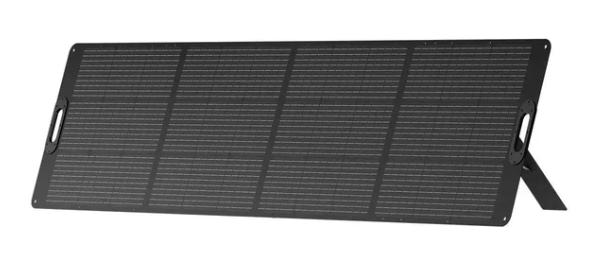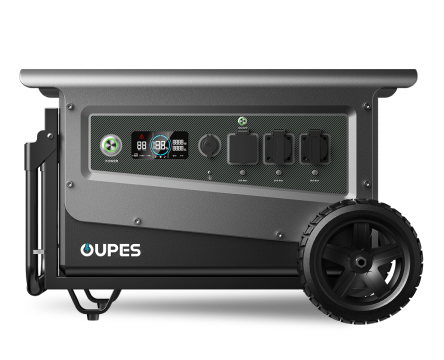
Table of Contents
- Introduction: The Rise of Flexible Solar Panels
- How Flexible Solar Panels Work
- Types of Flexible Solar Panels
- Advantages of Flexible Solar Panels
- Disadvantages and Limitations
- Comparison: Flexible vs. Rigid Solar Panels
- Best Use Cases for Flexible Solar Panels
- Compatibility with Portable Power Stations
- Installation, Care, and Maintenance Tips
- Future Outlook and Market Trends
- FAQ
Introduction: The Rise of Flexible Solar Panels
Flexible solar panels have gained significant popularity in recent years as a lightweight, versatile alternative to traditional rigid panels. Thanks to advancements in photovoltaic technology, they now offer practical energy solutions for mobile setups, camping, RVs, boats, and even curved surfaces that standard panels cannot accommodate.
According to the U.S. Department of Energy, renewable energy adoption has increased by over 300% in the past decade, with solar energy leading the growth. Within this trend, flexible panels have emerged as an attractive option for users seeking portability and adaptability. But are they truly worth the investment? This article explores their benefits, limitations, and ideal use cases.
How Flexible Solar Panels Work
Flexible solar panels function similarly to conventional rigid panels: they convert sunlight into electricity using photovoltaic (PV) cells. The difference lies in the materials — flexible panels use thin-film solar cells instead of thick silicon wafers, allowing them to bend and conform to various surfaces.
1. Structure and Composition
Most flexible panels use one of three materials:
- Amorphous Silicon (a-Si): Lightweight and affordable but lower in efficiency.
- CIGS (Copper Indium Gallium Selenide): High efficiency and excellent flexibility.
- Thin-Film Crystalline Silicon: Offers a balance between rigidity and flexibility.
2. Energy Conversion
Photons from sunlight hit the solar cells, exciting electrons and generating electricity. The power is typically stored in a portable power station or battery for later use.
Types of Flexible Solar Panels
1. Semi-Flexible Panels
These panels bend slightly (up to 30 degrees) and are commonly used on RV roofs or boat decks. They balance flexibility with durability and efficiency.
2. Ultra-Flexible Panels
Made from advanced polymers and thin-film CIGS materials, ultra-flexible panels can bend to extreme degrees — even rolled for transport — but tend to be less durable.
3. Foldable or Portable Panels
Designed for mobility, foldable panels are ideal for campers or emergency power setups. They pair well with portable solar generators, such as those made by OUPES, providing sustainable off-grid power.
Advantages of Flexible Solar Panels
1. Lightweight and Portable
Flexible panels weigh 70–80% less than rigid ones, making them easy to carry, mount, and reposition. This makes them ideal for portable power setups, hiking, and mobile living.
2. Versatile Installation Options
Their adaptability allows installation on curved or uneven surfaces, such as car roofs, tents, or boats. Adhesive backing eliminates the need for heavy mounting brackets.
3. Durability and Shock Resistance
Without glass layers, flexible panels resist vibration and impact better than traditional panels, which is beneficial for mobile use.
4. High Efficiency-to-Weight Ratio
While efficiency per area is lower, their light weight means they produce more power per pound carried — a major advantage for outdoor adventurers.
Disadvantages and Limitations
1. Lower Efficiency
Typical flexible solar panels offer 10–18% efficiency, compared to 20–23% for rigid monocrystalline panels. This means you’ll need a larger surface area to generate the same power.
2. Shorter Lifespan
Thin-film materials degrade faster under UV exposure, reducing performance over time. Most flexible panels last 5–10 years, compared to 20–25 years for rigid ones.
3. Heat Sensitivity
They lack the airflow that rigid panels have, which can lead to overheating and reduced output efficiency in hot environments.
4. Limited Waterproofing
Although some models are water-resistant, not all can withstand prolonged exposure to rain or snow, requiring protective mounting.
Comparison: Flexible vs. Rigid Solar Panels
| Feature | Flexible Solar Panel | Rigid Solar Panel |
|---|---|---|
| Weight | 1.5–4 lbs (lightweight) | 15–25 lbs (heavy) |
| Flexibility | Can bend up to 30° or rollable | Completely rigid |
| Efficiency | 10–18% | 20–23% |
| Durability | 5–10 years | 20–25 years |
| Installation | Simple, adhesive-based | Requires mounting brackets |
| Best Use Case | Camping, RV, boats, mobile use | Permanent home or business installation |
Best Use Cases for Flexible Solar Panels
1. Camping and Outdoor Activities
Flexible panels are excellent companions for outdoor adventures where portability and quick setup are key. They can easily recharge small appliances and portable power stations when sunlight is available.
2. RVs and Vans
Their curved mounting ability makes them ideal for RV and van roofs. They provide consistent off-grid power without adding much weight.
3. Boats and Marine Applications
Salt-resistant coatings and low weight make flexible panels perfect for marine use. They can charge batteries for lighting, GPS, and refrigeration onboard.
4. Emergency and Disaster Preparedness
In blackout situations, flexible solar panels combined with portable generators offer a dependable energy backup. They can be stored compactly and deployed rapidly when needed.
Compatibility with Portable Power Stations
Flexible solar panels can effectively power portable power stations when equipped with appropriate connectors (usually MC4). They provide a renewable charging solution for off-grid living, outdoor expeditions, or emergency use.
Many modern systems, such as those made by OUPES, support solar input from flexible panels with maximum power point tracking (MPPT) technology. This ensures the best possible conversion efficiency, even under variable light conditions.
Key Compatibility Tips
- Check voltage and wattage compatibility before connecting.
- Use extension cables rated for outdoor and cold-weather use.
- Avoid overloading the input with panels exceeding rated wattage.
Installation, Care, and Maintenance Tips
1. Installation
Clean the surface thoroughly before mounting the panel using adhesive or Velcro. Ensure proper orientation toward sunlight for maximum exposure.
2. Cleaning
Use a soft, damp cloth to remove dust and debris. Avoid abrasive cleaners or high-pressure sprays that may damage thin layers.
3. Storage
When not in use, roll or fold panels gently and store them in a dry, cool environment. Avoid bending beyond the manufacturer’s recommended curvature.
4. Regular Performance Checks
Monitor power output regularly to detect early signs of degradation or wiring issues.
Future Outlook and Market Trends
The flexible solar panel market continues to expand as materials and efficiency improve. According to International Energy Agency (IEA) reports, flexible photovoltaic technology could grow by 20% annually through 2030, driven by demand for lightweight renewable power.
Manufacturers are investing in stronger encapsulation materials, self-healing coatings, and hybrid systems combining flexible panels with rigid modules for better longevity. As prices drop and performance improves, flexible solar panels are becoming a more viable choice for sustainable mobile energy.
FAQ
1. Are flexible solar panels as efficient as rigid ones?
No. Flexible panels generally have 10–18% efficiency, while rigid panels reach 20–23%. However, they are far lighter and more versatile in application.
2. Can I walk on flexible solar panels?
Some panels are labeled as semi-walkable, but it’s generally not recommended. Excessive pressure can damage the cells or protective layers.
3. How long do flexible solar panels last?
With proper care, they can last 5–10 years, depending on materials and exposure conditions.
4. Are flexible solar panels waterproof?
Most are water-resistant but not fully waterproof. They can handle light rain but should not be submerged or left in prolonged wet conditions.
5. Can flexible solar panels power a portable power station?
Yes. They work well with compatible portable power stations, providing an efficient off-grid charging solution for outdoor and emergency use.
6. Are flexible solar panels worth buying?
If portability, lightweight design, and versatile installation matter to you — especially for camping, boating, or RV travel — flexible panels are definitely worth considering.




























